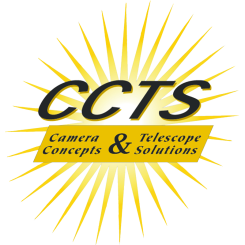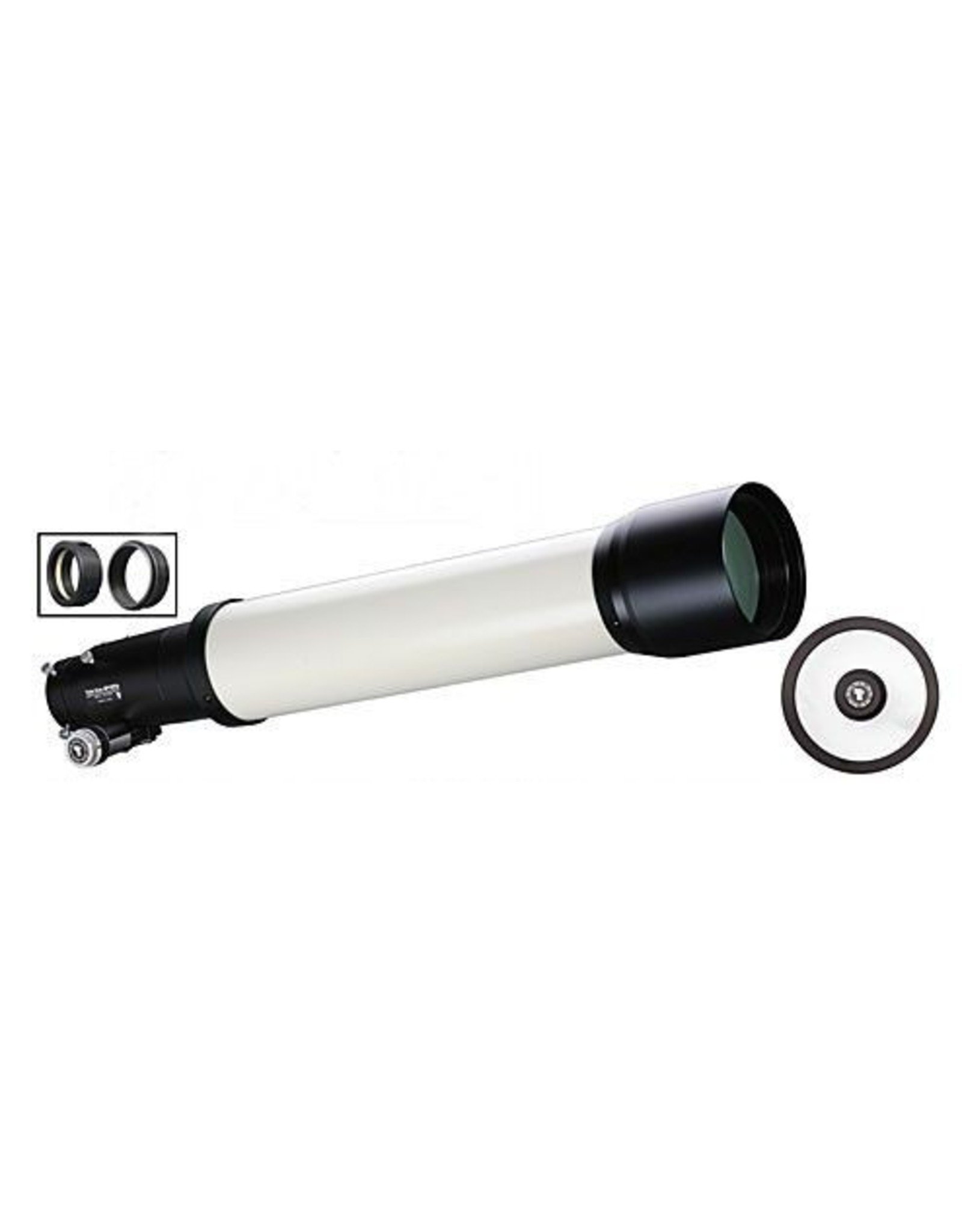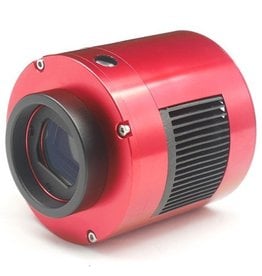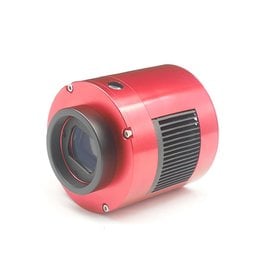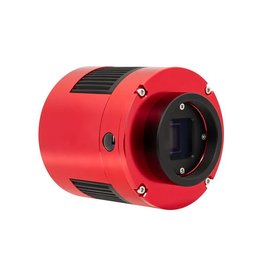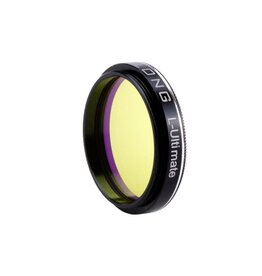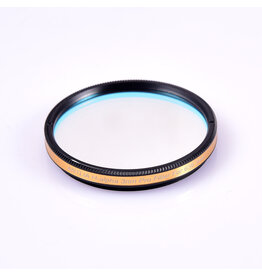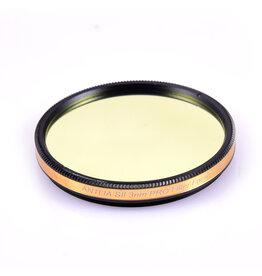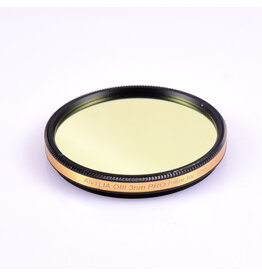Tele Vue NP127is Nagler-Petzval APO Refractor Telescope OTA
| Article number: | NPI-5054 |
| Availability: | More on the Way to us |
| Delivery time: | More on the Way to us |
Televue NP127is - 127mm APO Nagler-Petzval Refractor * The Tele Vue NP127is just got a make-over. Both the optical and mechanical designs have been revised to further reduce atmospheric defocusing ability. * A new lens prescription delivers smaller spot sizes over a broader wavelength, a stainless steel lens cell provides better thermal stability, and advanced multi-coatings maximize contrast and transmission. * The new Televue NP127is telescope has a new 10:1 focuser pinion assembly, and a longer captive dew shield and strikes quite a pose with gloss black anodized metal on the dew shield and rear cell. * While all these changes are welcome, the new NP127is kept its predecessor's fast f/5.2, flat-field optics and the ability to image across a 52mm diagonal sensor. All Tele Vue imaging system accessories are compatible with the new NP127is.

Based on exemplary wide field and planetary visual scopes with added features to make imaging easier and more flexible.
4° / 300x (Max. Visual Field / Max. Rec. Power)
The new Tele Vue NP127is APO Telescope has been announced and CCTS is taking pre-orders starting now. Deliveries are expected to begin in late September, 2010 on a first-come, first served basis. While most of the qualities of the NP127is have remained the same, there are some significant changes that were announced by Tele Vue. Here is a quote from that announcement: In about a month’s time the new, updated Tele Vue-NP127is will be available. Never one to rest, Tele Vue took the opportunity to tweak the scope in small but meaningful ways. Both the optical and mechanical designs have been revised to reduce atmospheric defocusing sensitivity (visually the difference is virtually indiscernible). The new lens prescription delivers smaller spot sizes over a broader wavelength range than previously, while a new stainless steel front cell helps provide better thermal stability in extreme climates. Advanced multi-coatings are applied to maximize contrast and transmission. Still the fastest in the industry, there is just no competitive comparison considering its f/5.2 speed and flat-field. The instrument has also been mechanically updated from its longer captive dew shield to its new 10:1 focuser pinion assembly, made for Tele Vue by Starlight Instruments. Along with an all new gloss black anodized metalwork treatment, the handsome new shapes of the dew shield and rear cell bring a refined elegance to this high performance APO refractor. The non-vignetting focuser retains its 3” input and 2.4” output to reduce bulk and permits imaging across the largest commercially available CCD chips (52mm diagonal). No need for a heavier, more cumbersome 3” focuser. Every 2.4” focuser we make is tested to hold and drive a minimum of 6 lbs of weight in vertical orientation. Except for a new Focusmate Driver attachment (available shortly), all other Imaging System accessories fit as previously.
Concept: CCD cameras have challenged telescope optics beyond anything ever placed at the focal plane. I knew our APO objectives were up to the challenge, and with the proper tweaks would be extraordinary tools for the imager. With Tele Vue Imaging System ("is") telescopes, we have refined our instruments and optional equipment beyond anything a CCD chip has seen. (Reviewer Note.) We started small (literally) in 2005 with the Tele Vue-60is and available Digital Micrometer Kit. Achieving critical acclaim with the 60is, we were encouraged to further develop "is" telescopes and accessories to maximize aperture, real field coverage and performance, and to make the processes easier for the imager. - Al Nagler
For 30 years, Tele Vue has pushed the boundaries of APO refractors, as well as eyepieces, to the recognized pinnacle of performance. We were gratified but not surprised that Backyard Astronomer's Guide said of the NP101: "optics don't get any better than this." No wonder Sky and Telescope rated the NP101 tops and selected it as the test instrument for its landmark review of the SBIG STL11000 CCD camera . The "is" versions of the Tele Vue-60, NP101, and NP127 retain the exemplary wide field and planetary visual capability while adding new features to make imaging easier and more flexible.
We were determined to make the NP series optically, mechanically, and functionally as perfect as possible for imaging up to 50mm diagonal chips without penalty to its near ideal visual operation. (Reviewer Note.) How? By applying the developments created for the Tele Vue-60is to the new NP101is and NP127is and then going beyond.

The NP101 (540mm, f/5.4, 4") and NP127 (660mm, f/5.2, 5") maintain their optical specifications yet with redesigned 4-element optical systems. Larger rear lens groups absolutely minimize vignetting in formats up to 50mm diagonal. For these large chips an optional field corrector was developed (Reviewer Note.) so the corners of the newly brightened edges would virtually be as perfect as the center of the field.
Next, to take full advantage of the larger lenses, we developed a larger focuser and draw tube having a 3" front aperture and 2.4" rear aperture. This eliminates any restriction of the larger diameter converging light cone. We build and test the rack and pinion focuser to hold 12 lbs. of weight, yet still permit extremely fine focusing control via a 10:1 dual speed pinion assembly. This new draw tube also permits quick change from visual to imaging operation and allows full camera rotation without focus change. In addition, it has the capability to correct for any residual focal plane tilt and accepts a "position stop" for our digital micrometer to allow repeatable focus measurement to 0.0001".
To maintain squareness to the optical axis while changing camera orientation, the draw tube has three lock screws that tighten against a taper on the "imaging insert" ring. This insert is threaded to accept Tele Vue's new Imaging System accessories including large diameter extension tubes, optical accessories, and camera and CCD attachments, all with mating threads. (Reviewer Note.)
The Focusmate 10:1 planetary ball type reduction focuser provides extremely sensitive focus adjustment, measurable with the optional Digital Micrometer Kit to better than 1/10,000". Also, the optional Focusmate Driver permits electronic motor control of the focusing process. The Focusmate Driver has direction push-buttons and adjustable speed. A tap on the button permits vibration-free focusing in steps as small as approximately 0.0005".
Tele Vue has been known for producing visual instruments "even better than you imagined." We aim to achieve the same with our imaging equipment. Our dedicated local machinists and in-house staff are as committed as ever to deliver on these quality and performance goals. (Reviewer Note.)
- Custom fitted case fits TV-NP127is only.
- Supports telescope by the tube, taking pressure off the front cell and focuser pinion.
- Positive lock latches with locks.
- Mount Rings, Digital Indicator, and Starbeam friendly.
- Retaining mechanism holds case lid open at 90°.
- Foam cutouts for 2" diagonal, 3 x 2" eyepieces, & 1 x 1¼" eyepiece.
- Approximate maximum exterior dimensions (excluding handle): 37 x 12½ x 9-inches (94 x 32 x 23-cm).
- Approximate empty weight: 12.4-lb (5.6-kg).



| Type | APO (Nagler-Petzval) Refractor (Elements/Groups: 4/2) |
| Objective (mm) | 127 |
| Focal Length (mm) | 660 |
| Focal Ratio (f/#) | 5.2 |
| Length OTA (inch) | 33.5 |
| Length with diagonal (inch) | 36.5 (with 2-inch diagonal) |
| Weight OTA/Std. Config (lbs) | 14.5 / 14.5 |
| Drawtube/Focuser | 2.4-inch, Focusmate dual-speed rack/pinion |
| Maximum Visual Field (deg.) | 4 (with 2-inch 55mm Plössl) |
| Maximum Recommended Power (x) | 300 |
| TV - NP127is & TV - NP101is |
|
